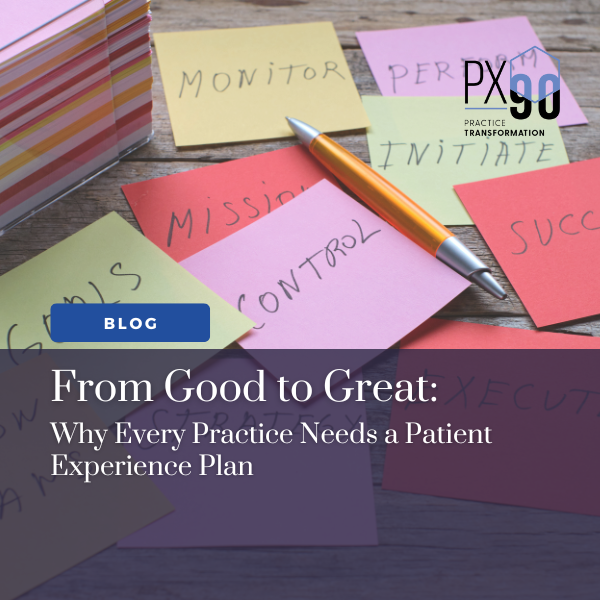The Missing Link Between a Good and Great Practice
In the early days of medicine, success meant opening your doors, providing care, and watching your practice grow. Back then, clinical outcomes were the yardstick. But in 2025, something has fundamentally changed: being good is no longer good enough.
Today, the gap between a good and a great medical practice isn’t clinical—it’s experiential.
PX Ninety helps practices close that gap.
“The missing link between a good and great practice is the patient experience—and the team experience leads to it.”
Why Patient Experience Matters More Than Ever
Every interaction a patient has with your practice—from a phone call to the exam room—shapes how they feel. Those feelings drive behavior: whether they return, whether they refer, whether they leave a review.
And make no mistake, you are being reviewed.
“Even if you don’t ask for reviews, people will go online and review your practice.”
Medical practices today exist in the Experience Economy. Just like restaurants or hotels, patients judge based on how your environment feels, how your staff interacts, and how seamless the experience is. The patient is no longer just a patient—they are a savvy, empowered consumer.
What Is a Patient Experience Improvement Plan?
A Patient Experience Improvement Plan is a strategic framework designed to elevate how patients perceive and interact with your practice. It covers everything beyond clinical care—environment, communication, team culture, and customer service. It’s intentional, not accidental.
PX Ninety offers a proven model: 12 “workouts” that guide practices through real transformation over 90 days.
Implementing PX Ninety: Steps to Success
1. Reframe the Practice Culture
Your practice is more than procedures—it’s a service brand. Ask: What business are we in? Are we treating conditions or creating life-changing experiences?
Reinvigorate your team’s purpose by returning to why they joined medicine in the first place.
2. Define Your Patient Journey
Break down the patient experience into each stage:
- Enticing: website, reviews
- Entering: first contact
- Engaging: in-office visit
- Exiting: check-out process
- Extending: follow-up, referrals
Every touchpoint is a chance to connect.
3. Identify and Eliminate Negative Cues
From outdated signage to cluttered waiting areas, small things signal big messages. Use the Sensory Assessment method to evaluate your space with fresh eyes.

4. Train Your Team with Hospitality in Mind
Your front desk is your Director of First Impressions. Hire for attitude, train for empathy, and cultivate a culture where everyone owns the experience.
5. Encourage and Leverage Reviews
Don’t leave your reputation to chance. Build systems that ask, collect, and respond to patient feedback. Positive reviews fuel growth more than traditional advertising ever could.
Real Results: A Client Story
One PX Ninety client—a mid-sized ophthalmology practice—transformed their reception area, retrained staff on hospitality principles, and launched a feedback loop for patient reviews.
Within three months, their Google rating jumped from 3.9 to 4.7. They saw a 15% increase in new patient bookings from web referrals. Staff reported higher morale, and patients used words like “warm,” “cared for,” and “welcoming” in feedback.
This is what going from good to great looks like.
Final Thoughts: What’s Your Next Move?
PX Ninety isn’t just a checklist. It’s a mindset shift.
You’ve already mastered clinical care. Now it’s time to master how care feels. By adopting a patient experience improvement plan, you not only build a stronger brand—you reignite your team’s passion and make patients your biggest advocates.
Because in today’s healthcare world, experience is everything.

